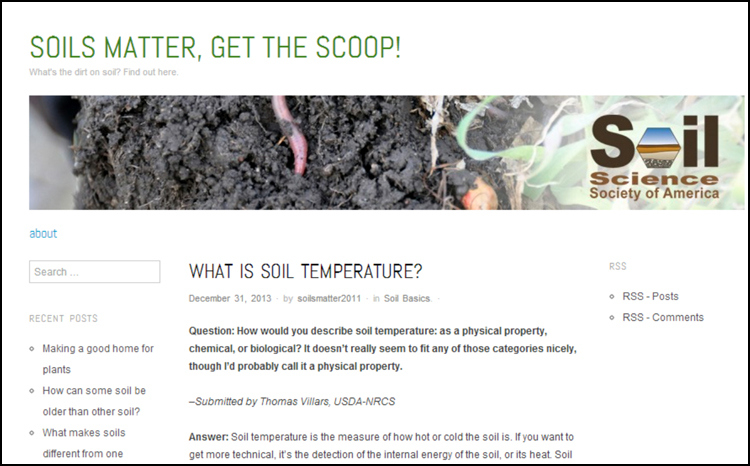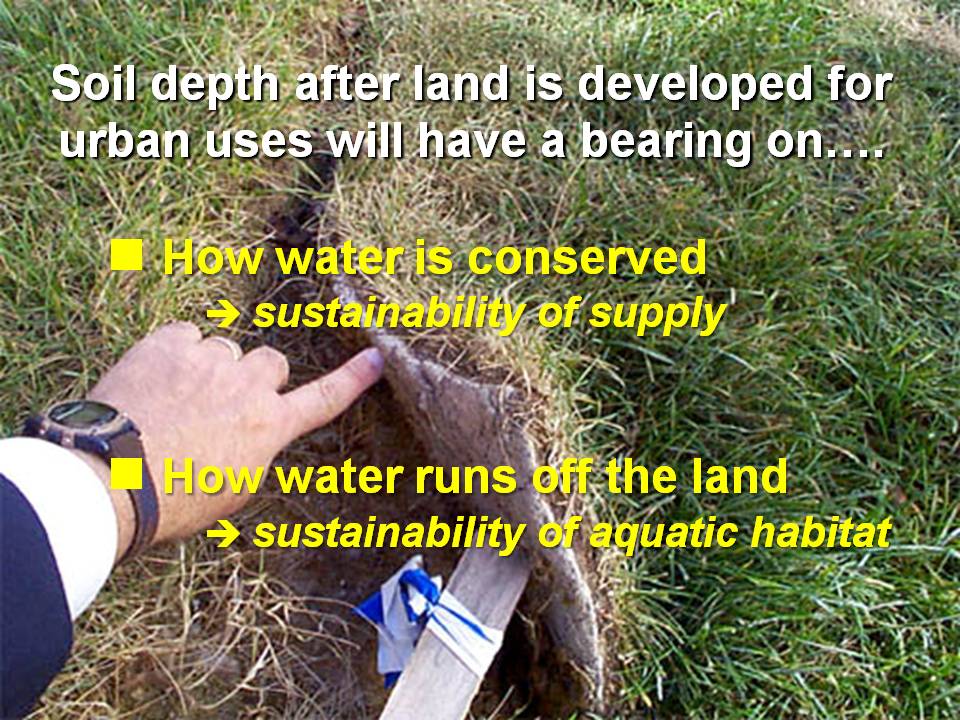NEW ONLINE RESOURCE: Getting the Dirt on Dirt
Note to Reader:
 “An absorbent topsoil layer has emerged as a fundamental building block for achieving water sustainability outcomes through implementation of green infrastructure practices,” states Raymond Fung, Past-Chair of the Green Infrastructure Partnership. “Topsoil is the interface between rainwater management and drought management. Soil depth creates a sponge…. which can limit runoff during wet-weather periods; and reduce water need during dry-weather periods.”
“An absorbent topsoil layer has emerged as a fundamental building block for achieving water sustainability outcomes through implementation of green infrastructure practices,” states Raymond Fung, Past-Chair of the Green Infrastructure Partnership. “Topsoil is the interface between rainwater management and drought management. Soil depth creates a sponge…. which can limit runoff during wet-weather periods; and reduce water need during dry-weather periods.”
Soils Matter, Get the Scoop
For more than 75 years, the Soil Science Society of America (SSSA) has informed members and professionals on all matters relating to soil, according to the soils.org website. From bioremediation to environmental quality, SSSA has provided a wide range of services and publications to shape our knowledge on this “living entity,” allowing for the development of better soil-related practices.
During a recent website redesign, SSSA saw the opportunity to share this wealth of information with non-professionals with Soils Matter, Get the Scoop!—an “all things soil” blog.
Question and Answer Format
Soils Matter covers everything from science-based topics such as how plastic affects the microbes in soil to agricultural practices such as how soil influences the flavor of wine. Each post begins with a question, asked by a follower or curious visitor.
The answers are clear and detailed, aimed at the intelligent consumer and non-soil specialist. What’s more, each blog post is authored by an established soil professional and expert on the topic.
“We have a handful of SSSA members who are willing to work with us on the answers,” says Susan V. Fisk, director of public and science communications for SSSA. “All the people who do the answers are actual soil scientists.”
Holistic Context
Soil is a vital component in landscape architecture, from providing the material to create artificial hills to the planting medium that serves as the fundamental nutrition for our plants.
“Soils support buildings and infrastructure,” says Fisk, who has heard many horror stories of poorly engineered retaining walls from landscape architects. “On our end we have the same thing, because people are not using the right soils for their retaining wall, and it might not hold water, or [hold] too much or too little. So it needs to be viewed in a kind of holistic way.”
And while many landscape professionals are well versed in the composition and properties of soils, their clients and communities are not. Changing climatic conditions can often mean changing soil conditions as well. And when it comes to designing and managing urban soils, there’s still a lot of new territory.
To Learn More:
More on Soils Matter, Get the Scoop! and other soil-related topics can be found at http://www.soils.org.
Also, click on “Topsoil Primer Set” connects the dots between rainwater management and drought management for information on a British Columbia initiative that has highlighted the importance of soil for water balance management.



